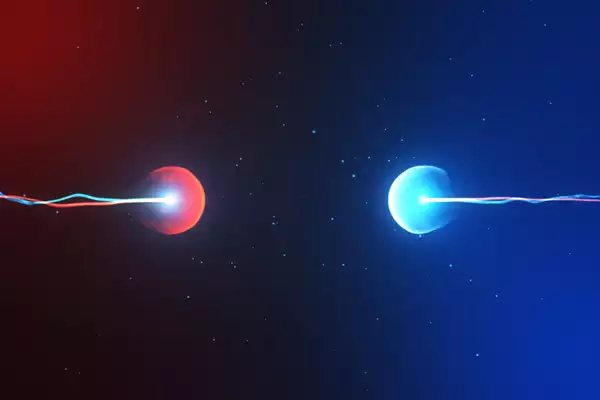Scientists have recently detected “antihyperhydrogen-4”, the heaviest antimatter nucleus ever discovered in a particle accelerator.
Significance of recent research:
- Insights could help explain why the universe is predominantly made of matter, despite equal amounts of matter and antimatter being created initially.
- Scientists will compare the masses of antiparticles and their matter counterparts.
- This comparison may reveal further clues about the matter-antimatter imbalance and the evolution of the Universe.
About Antimatter:
- Antimatter particles are counterparts to regular matter particles but with opposite electric charges.
- Examples:
- Positron: The antimatter counterpart of the negatively charged electron.
- Antiproton: The antimatter counterpart of the positively charged proton.
- Antineutron: The antimatter counterpart of the neutron.
- Antimatter and matter particles are typically produced in pairs and annihilate each other upon contact, releasing pure energy.
Properties of Antimatter
- Mass: Antimatter particles share the same mass as their matter counterparts.
- Electric Charge: The charges are opposite. For example, a positron has a positive charge while an electron has a negative charge.
- Interaction: When matter and antimatter particles meet, they annihilate each other, releasing pure energy.
Production and Annihilation
- Pair Production: Matter and antimatter particles are always produced in pairs.
- Annihilation: Upon contact, they annihilate each other, converting their mass into energy.
Other key facts:
- According to the standard model of cosmology, the early universe was a plasma of matter and antimatter particles.
- These particles should have annihilated each other completely. However, some unknown imbalance resulted in more matter being produced, preventing cosmic annihilation.
- Antihyperhydrogen-4 consists of an antiproton, two antineutrons, and one antihyperon (a baryon containing a strange quark).
Ref: Source
| UPSC IAS Preparation Resources | |
| Current Affairs Analysis | Topperspedia |
| GS Shots | Simply Explained |
| Daily Flash Cards | Daily Quiz |
Frequently Asked Question:
What is the significance of the recent discovery of “antihyperhydrogen-4”?
The discovery could provide insights into the matter-antimatter imbalance in the Universe, potentially explaining why matter dominates antimatter.
How are antimatter particles related to regular matter particles?
Antimatter particles are counterparts to regular matter particles but with opposite electric charges.
What happens when antimatter and matter particles come into contact?
Antimatter and matter particles typically annihilate each other upon contact, releasing energy.
Why do scientists study the masses of antiparticles and their matter counterparts?
Comparing the masses of antiparticles and their matter counterparts may reveal clues about the matter-antimatter imbalance and the evolution of the Universe.
Can you provide examples of antimatter particles and their matter counterparts?
Positron (antimatter counterpart of electron), antiproton (antimatter counterpart of proton), and antineutron (antimatter counterpart of neutron) are examples of antimatter particles and their matter counterparts.





